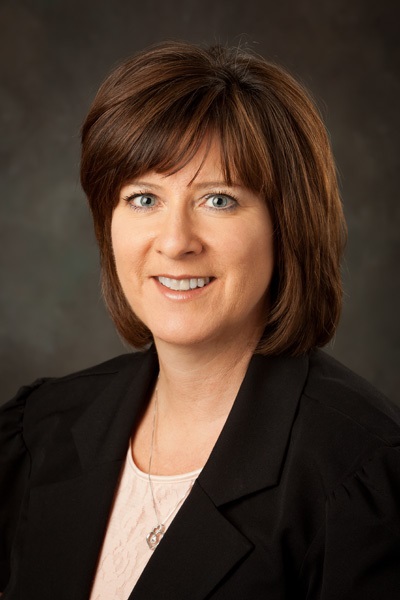Funding Rural Hospitals

According to the United States Government Accountability Office, about 60 million Americans—or around one-fifth of the country—live in rural areas. About 16% of Texans, over 4 million people, live in rural parts of the state, as reported by the 2020 Census. When it comes to healthcare, rural Texans face many challenges, including a lack of insurance coverage and longer travel times to receive health services compared to those in more populated areas.
In rural Texas, where small communities rely heavily on their local hospitals, Sharon Hunt, Ph.D., FACHE, CHFP, has become a beacon of support, using her expertise to help hospitals secure the funding and resources they need to keep their doors open and their communities healthy. Hunt recently helped Coon Memorial Hospital in Dalhart and Crosbyton Clinic Hospital obtain Texas Health and Human Services Commission (HHSC) grant funding.

Sharon Hunt, Ph.D., FACHE
We sat down with Hunt, who is an associate professor in the Department of Healthcare Management & Leadership at the TTUHSC School of Health Professions, and discussed her work with rural hospitals and the importance of making sure hospitals in rural Texas have the appropriate resources to care for those in their areas.
Hunt has many years of experience working in rural health, spending time in several positions. She was a CEO at a rural hospital before transitioning to working in academia within the School of Health Professions. She has also served as an interim CFO and financial consultant for rural hospitals around Texas. She has seen first-hand the challenges rural hospitals face.
When larger hospitals seek funding, they often turn to internal grant writing departments or grant writers on staff. Hunt says that is an obstacle for smaller, rural hospitals that can’t afford to hire someone with that expertise.
Many hospitals, such as the Crosbyton Clinic Hospital, have worked with Hunt in the past and reach out to her for help with financial reporting and assistance with securing grant funding when a need arises. Others will often reach out to the Texas Organization of Rural and Community Hospitals (TORCH), who Hunt helped bring about an agreement with TTUHSC to help provide these services.
“The hospitals will reach out to TORCH and let them know that there's a need,” Hunt said. “Usually, they've had a CFO that's departed, and they don't have anyone on staff to fill that gap. Then, they will reach out to me, and we'll make an agreement between TTUHSC and TORCH to provide those services. It comes about with them contacting me and letting me know there's a need. I'll see if I'm available or if it can be within the scope of what they allow through the School of Health Professions Practice Income Plan.”
If it falls within the scope and she is able to provide the services they need, Hunt can help provide assistance on an interim basis until the hospital is able to hire a permanent CFO or until the project she is contracted to do is completed.
When it comes to grant funding, the first step is identifying what grants are available. These can be from HHSC, which Hunt says are easier to identify, but private grants are also available.
“It takes a lot of work going in and matching the needs that the hospital has with the funding sources and the grants to match those up--what they're funding versus what needs there are,” Hunt said. “And then when you identify those grants that can potentially cover the hospital's needs, you can begin to work on the grant requirements and putting together the grant.”
Oftentimes, she works with others on staff at the hospital who will compose the narrative sections, while she helps to complete the financial and budgeting portions of the grant request.
Most grants fund major expenditures, such as equipment and capital projects. Hunt says the grants she recently helped secure in Crosbyton and Dalhart were more nonspecific, which allowed the hospitals to use them for operations.
“Crosbyton was able to use the funds to help cover their ER physician expenses,” Hunt said. “When you have to have 24/7/365 coverage in a low-volume ER, it's hard to cover that cost. They also had an agency staffing some of the nurses, which came about during COVID, and that also drove up the costs. These grants really helped them fund those expenses.
“In Dalhart, I think we're going to put that funding towards some equipment that
they need,” Hunt said. “But like I said, luckily, these specific grants allow hospitals
to use them for the health care operations if they need to.”
Hunt says that, like in Crosbyton, lower volumes and staffing shortages are typical
in rural hospitals around the state.
“A rural hospital will tend to have lower volumes, so it's hard to cover the cost when you're paid a per diem or a set rate. For that reason, many rural hospitals have converted to critical access hospitals because they get cost reimbursement from Medicare. However, as more Medicare patients transition to Medicare Advantage, those Medicare Advantage plans don't have to pay cost reimbursement. That hurts rural hospitals because they are not getting paid enough to cover their costs.”
Staffing is an issue throughout healthcare, but Hunt says it is particularly difficult for rural hospitals, which often have difficulty finding physicians, nurses, or other positions such as CFO or finance positions who want to work in rural areas.
“The quality of care is there. They have to meet the same requirements the large urban hospitals have to meet, but having the finances to cover those is a challenge.”
Hunt says her appreciation for those who provide health care in rural communities motivates her to continue doing what she can to help.
She hopes she can continue to help secure grant funding for rural hospitals while also helping share some of the struggles they face with the future health leaders in her classes and preparing them for some of those challenges.
“Rural healthcare workers are the backbone of our nation,” Hunt says. “I've heard President Lori Rice-Spearman say this: ‘They provide the food, fiber, and fuel for our nation.’ The hospitals and physicians in those rural areas help support those industries that are vital for the success of our nation. I see the passion that they have for their communities and trying to provide good health care for their communities. There is a lot of buy-in and loyalty there, which is one reason I enjoy working with rural hospitals. People are wearing so many hats and working to keep their communities thriving.”
Related Stories
TTUHSC Dean to be Inducted into the National Academies of Practice as Distinguished Fellow
Gerard E. Carrino, Ph.D., MPH, dean of the TTUHSC Julia Jones Matthews School of Population and Public Health, will be inducted into the National Academies of Practice (NAP) as a Distinguished Fellow of the Public Health Academy.
TTUHSC School of Nursing Celebrates 10-Year Anniversary of the Abilene Community Health Center
The TTUHSC School of Nursing hosted a 10-Year Anniversary Celebration and Open House for the Abilene Community Health Center. The center is one of 71 Federally Qualified Health Centers (FQHCs) in Texas according to the Texas Health and Human Services.
TTUHSC Receives $1.3 Million HRSA Telehealth Resource Center Grant to Expand Telehealth in Texas and Louisiana
The TexLa Telehealth Resource Center, based at TTUHSC, has been awarded a $1.3 million, four-year grant from HRSA to strengthen and expand digital health services in Texas and Louisiana.
Recent Stories
TTUHSC Cancer Researcher Honored by National Academy of Inventors
C. Patrick Reynolds, M.D., Ph.D., director of the School of Medicine Pediatric Cancer Research Center at TTUHSC, has dedicated his life as a researcher to developing treatments for childhood cancers.
TTUHSC School of Nursing Celebrates 10 Years of the Veteran to BSN Program
The TTUHSC School of Nursing recognized the 10-year anniversary of the Veteran to Bachelor of Science in Nursing (VBSN) program during the fall 2025 commencement ceremonies held Dec. 13 in Lubbock, Texas.
TTUHSC Dean to be Inducted into the National Academies of Practice as Distinguished Fellow
Gerard E. Carrino, Ph.D., MPH, dean of the TTUHSC Julia Jones Matthews School of Population and Public Health, will be inducted into the National Academies of Practice (NAP) as a Distinguished Fellow of the Public Health Academy.
